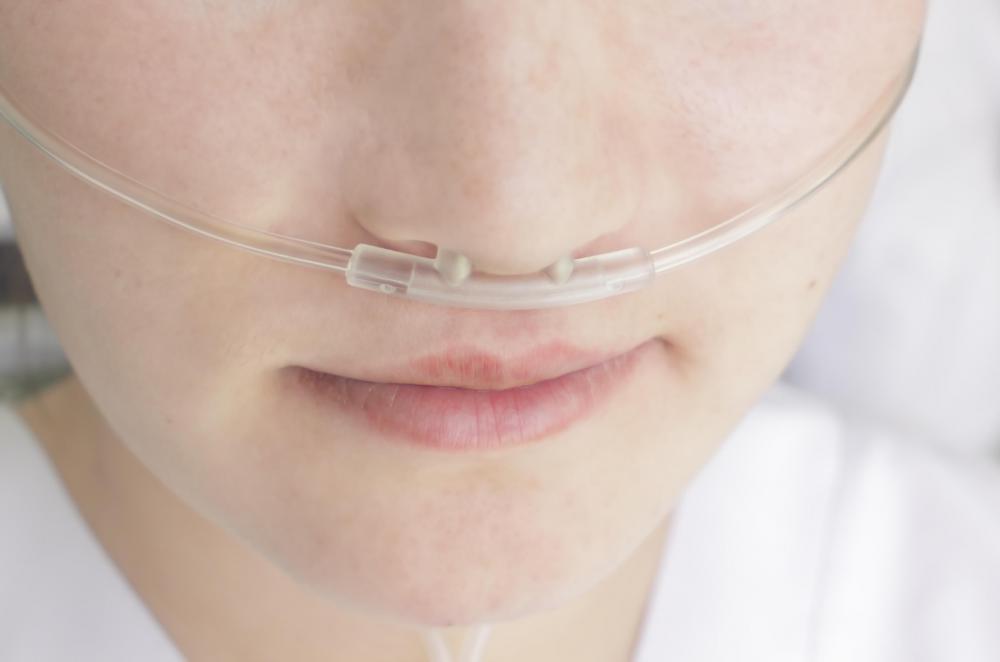At WiseGEEK, we're committed to delivering accurate, trustworthy information. Our expert-authored content is rigorously fact-checked and sourced from credible authorities. Discover how we uphold the highest standards in providing you with reliable knowledge.
What are the Different Pneumothorax Symptoms?
A pneumothorax is also known as a collapsed lung and it can be anything from a relatively mild to an extremely serious and life-threatening condition, depending on its cause. A lung can partially or totally collapse if a person has a sudden injury to it, like a gunshot wound (traumatic), and the condition may also occur as a result of illnesses such as pneumonia or lung cancer (secondary spontaneous). Weak lung tissue may result in small holes and a certain amount of collapse occurring (primary spontaneous), or in its arguably worst form, air pressure around the lung collapses it completely (tension). Pneumothorax symptoms may depend on type and sometimes the condition is obvious, while other times it is so mild it is not noticed.
There aren’t that many pneumothorax symptoms to be recognized, though if lung collapse is significant, most symptoms could be present and felt to an extreme degree. One of the most commonly noted symptoms is pain on one side of the chest which does not radiate to the other side or is located in the center of the chest. It should be very clearly felt on one side only.

Some people who have pneumothorax symptoms also have a condition called referred pain. Either the shoulder or the stomach or both may be uncomfortable and sore. The interior of the lung really doesn’t have nerves that send out pain signals, so it is common for people to experience referred pain instead.
Pain isn’t necessarily the only or most obvious symptom. An affected person might have a sensation of tightness or pressure in the chest and he could feel that breathing is impaired. This could mean feeling shortness of breath or leaves the patient gasping for breath. Conditions like primary spontaneous pneumothorax are more associated with minor breathing discomfort, while tension, trauma or severe second spontaneous pneumothorax may impair breathing much more.

Another of the pneumothorax symptoms is cough, which may be dry or barking. Some people also notice an increased heart rate. If the condition is severe, lack of adequate oxygen might be evident in darkened and more prominent veins in the neck. A person may also become panicked or confused, and should oxygen levels drop well below normal, unconsciousness or even death may result.

Though the list of pneumothorax symptoms is not extensive, such symptoms require attention and immediate medical assistance. From an observer’s perspective, it’s impossible to tell the cause of the condition and the extent of lung collapse. While a few people who have primary spontaneous pneumothorax may not require treatment, most other people will, and it’s always better to err on the side of caution. Moreover, those who’ve suffered this condition in the past may be more at risk of having a repeat collapsed lung in the future. They especially need to know the symptoms and get medical help if they feel the condition is recurring.
AS FEATURED ON:
AS FEATURED ON:
















Discuss this Article
Post your comments